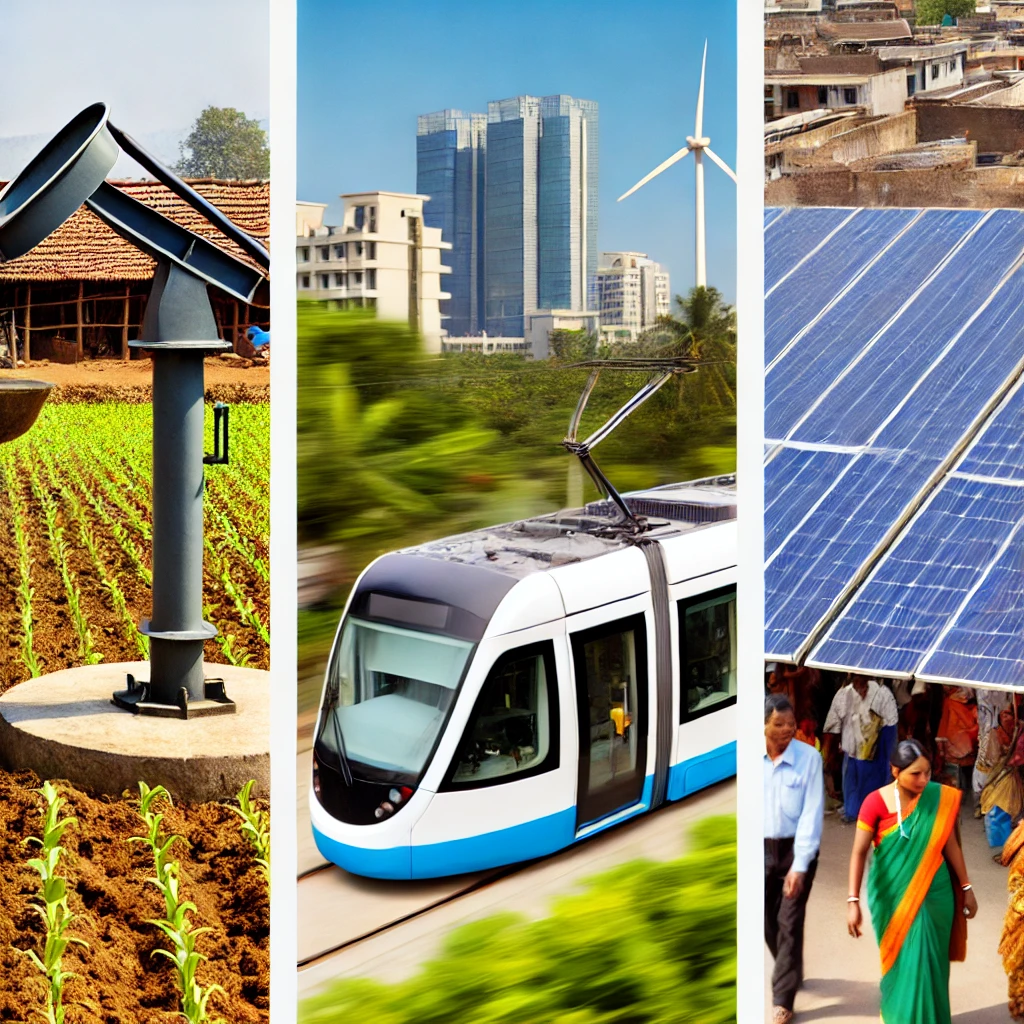Harnessing the Sun: Solar Pumps, Electric Tramways, and Solar Policies in Northeast India
As the world grapples with the effects of climate change and the need for sustainable energy solutions becomes more urgent, various regions are stepping up to harness the power of the sun. From the fields of rural India to the bustling cities of China, solar energy is playing a pivotal role in transforming agriculture, transportation, and power generation. In this blog, we will explore three key advancements in sustainable energy: the adoption of solar pumps in India, the development of electric tramways in China, and the implementation of solar policies in Northeast India.
Solar Pumps in India: Revolutionizing Agriculture
India, with its vast agricultural landscape, has long relied on traditional water pumps powered by diesel or electricity to irrigate crops. However, these methods are not only costly but also environmentally damaging. To address these challenges, solar pumps are being increasingly adopted, particularly in rural areas where access to electricity is limited.
Solar pumps operate by harnessing solar energy through photovoltaic panels, converting sunlight into electricity to power the pump. This technology offers a reliable and eco-friendly solution for irrigation, significantly reducing the dependence on diesel and lowering operational costs for farmers. The benefits are twofold: farmers save on fuel costs, and the reduction in diesel use decreases carbon emissions, contributing to a cleaner environment.
The Government of India has recognized the potential of solar pumps to drive sustainable agricultural practices. The Pradhan Mantri Kisan Urja Suraksha evam Utthan Mahabhiyan (PM-KUSUM) scheme is a flagship initiative aimed at promoting the use of solar energy in agriculture. Under this scheme, farmers receive financial assistance and subsidies to install solar pumps, making the technology more accessible and affordable. The PM-KUSUM scheme not only supports the government’s goal of increasing the share of renewable energy in the country’s energy mix but also empowers farmers to become more self-reliant and resilient to the impacts of climate change.
Electric Tramways in China: Leading the Way in Sustainable Urban Transport
While solar energy is transforming rural agriculture in India, China is making strides in sustainable urban transportation. As one of the world’s largest contributors to greenhouse gas emissions, China has taken significant steps to reduce its carbon footprint, particularly in its rapidly growing cities. One of the most notable advancements is the development of electric tramways in cities like Shenzhen, Beijing, and Guangzhou.
Electric tramways offer a clean and efficient alternative to traditional public transportation systems that rely on fossil fuels. These modern tram networks are powered entirely by electricity, reducing air pollution and contributing to a healthier urban environment. The trams are equipped with advanced technologies such as wireless charging and energy-efficient designs, making them not only environmentally friendly but also cost-effective to operate.
Shenzhen, in particular, has emerged as a global leader in sustainable transportation. The city has successfully implemented a fully electric public transportation system, including buses and trams, setting a precedent for other cities around the world. The adoption of electric tramways is a key component of China’s broader strategy to reduce urban air pollution and combat climate change. By investing in sustainable transportation infrastructure, China is paving the way for a cleaner and more sustainable future.
Solar Policies in Northeast India: Empowering Rural Communities
Northeast India, a region known for its diverse cultures and challenging terrain, is emerging as a focal point for solar energy development. The region’s unique geographical and environmental conditions make it an ideal candidate for the implementation of solar energy projects. Recognizing this potential, both the central and state governments have introduced policies and initiatives to promote the use of solar energy in the region.
One of the most significant initiatives is the North Eastern Region Power System Improvement Project (NERPSIP), which aims to enhance power infrastructure in the region by integrating solar energy into the grid. This project is part of a larger effort to improve energy access in rural and remote areas, where traditional electricity supply is often unreliable or nonexistent.
In addition to NERPSIP, various state governments in Northeast India have launched their own solar policies to encourage the adoption of renewable energy. These policies focus on providing financial incentives for solar installations, supporting the development of solar microgrids, and promoting community-based solar projects. By empowering local communities to generate their own electricity, these policies are helping to reduce energy poverty and foster economic development in the region.
Northeast India’s commitment to solar energy is not only a step towards achieving the country’s renewable energy targets but also a crucial strategy for ensuring energy security and resilience in a region that is often vulnerable to natural disasters. The successful implementation of these solar policies will have far-reaching benefits, from reducing greenhouse gas emissions to improving the quality of life for millions of people.
Conclusion
The advancements in solar energy across India and China demonstrate the transformative power of renewable energy in addressing some of the most pressing challenges of our time. From the widespread adoption of solar pumps in Indian agriculture to the development of electric tramways in Chinese cities and the implementation of solar policies in Northeast India, these initiatives are paving the way for a more sustainable and resilient future.
Welcome to WordPress. This is your first post. Edit or delete it, then start writing!

Leave a Reply